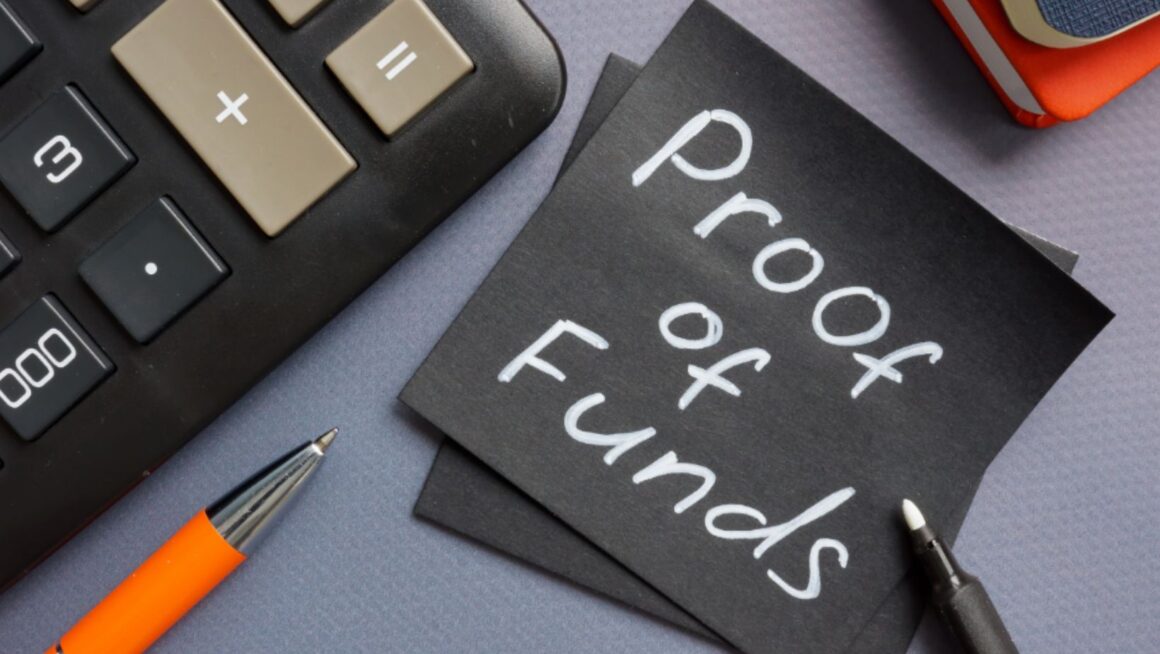In real estate, be it your first home purchase, an investment in a rental property, or a bid on a commercial property, credibility counts. Lenders, agents and sellers need a guarantee that you are a person who can deliver on your bid. Presenting proof of funds (POF) is one of the best methods that can be used to give such assurance.
The importance of proof of funds is not a mere formality but rather an important element in closing deals, eliminating delays, and rising above the competition. It demonstrates that you have the financial capability of making a purchase either by use of cash or funds that are readily available.
What is Proof of Funds?
Proof of funds is a document that proves that you have the money to make the transaction of a real estate. Take for example buying a Tasmanian real estate, where sellers and agents often require solid proof that a buyer has the financial capacity to complete the purchase. It is always demanded in all-cash transactions, but it may be involved in financing transactions as well. Sellers and their representatives demand POF because they do not want a buyer to place an offer which he or she cannot actually support.
It is pretty simple: when you say you have the funds you must prove they are available. This will give the seller confidence that the transaction is not a scam and it minimizes wasting of time on buyers who are not prepared financially. Discover more on this link https://www.scotsmanguide.com/residential/hard-money-should-be-on-every-brokers-adar/.
Common Forms of Proof of Funds
Various forms of proof of funds are acceptable, depending on the nature and location of your finances and the method you intend to use to pay for the property. There are many different kinds of financial documents, but the most typical ones include bank statements, letters from banks, statements for brokerage accounts, and escrow accounts.

You can use a bank statement as the most basic tool. Both the available funds and your account balance are shown. You might be asked to submit statements from more than one account if the transaction is substantial.
Your banking institution will formally confirm that you have the necessary funds by issuing a bank letter. Due to the omission of certain personally identifiable information while still providing necessary verification, this letter is frequently more convenient to share than complete statements.
Statements from brokerage accounts can also be used as evidence if your funds are invested. Likewise, if you have previously deposited monies into an escrow account, the seller can see this on your escrow statement as confirmation that the funds are available and designated for the purchase.
The Importance of Having Proof of Funds
Trust is the primary reason why proof of funds is vital. Since large quantities of money are involved in real estate transactions, sellers must have faith in the buyers’ ability to complete the contract. POF expedites talks while simultaneously instilling confidence.
When selling in a hot market, you can get more than one offer. Going the extra mile by including evidence of money with your offer gives you an advantage over other purchasers who haven’t done the same. It shows that you’re serious and ready.
Having the ability to demonstrate financial stability is crucial in commercial real estate and high-value residential transactions. Buyers who have proven they are financially prepared are preferred by both agents and sellers. Check out this link https://www.mansionglobal.com/articles/when-buying-in-cash-pays-off-in-real-estate-94749.
Comparison of Pre-Approval Letter and Proof of Funds
While the former verifies that you do, in fact, have the necessary funds on hand, the latter serves as official notification from a mortgage lender that you have been pre-approved for a loan up to a specified limit.
Those two things are not the same thing. Proof of money is required in many transactions, particularly those involving cash purchases, regardless of whether you have financing or not. For more conventional house loans, you may be required to provide evidence of both your ability to secure financing (in the form of a pre-approval letter) and your ability to pay (in the form of a down payment and closing expenses).
Quick Methods for Acquiring Proof of Funds
Prepare your evidence of finances ahead of time if you intend to make an offer. Deciding which accounts will be used for the purchase is the initial stage. Subsequently, get in touch with your banking or credit union branch to ask for the paperwork you’ll need.
Within a couple of days, the majority of banks will be able to send you a letter confirming the account. You should prepare ahead of time in case it takes more time to withdraw funds from investment accounts or move them to a more accessible account.
A letter verifying the private lender’s commitment to funding your purchase can also be requested if you are dealing with them, such as a hard money lender. This can be especially helpful in investment transactions, and it’s a good reason to learn more about hard money lending if you’re an investor looking for fast, flexible financing options.
Hard Money Loans as Evidence of Funds
Private lenders, not banks, offer hard money loans for shorter periods of time. Because of how fast they are approved and funded, they are perfect for time-sensitive projects or competitive bidding scenarios, which is why they are commonly utilized in real estate investment.
The lender can confirm your funding approval with a letter when you get a hard money loan. If you need to convince sellers that you can close fast due to your secured finance, this letter can do the trick.

Using actual currency for POF has the benefit of being quick. Hard money lenders typically offer cash promises within days, in contrast to the weeks it takes for standard mortgage approvals. You should consider the benefit of getting a deal against the expense, as interest rates and costs tend to be higher.
Mistakes to Avoid When Using Proof of Funds
Not providing up-to-date or complete documentation is a typical error. Sending a bank statement from months ago can make the seller suspicious that the money is still available. Keep all paperwork up-to-date; preferably, it should be from the last 30 days. Follow this page for more.
Sending statements with excessive redaction is another error. Although it is understandable to conceal account numbers for security reasons, excessive data removal can render the document useless. The buyer must be able to view the name of the account holder, the name of the bank, and the current balance in order to complete the purchase.



